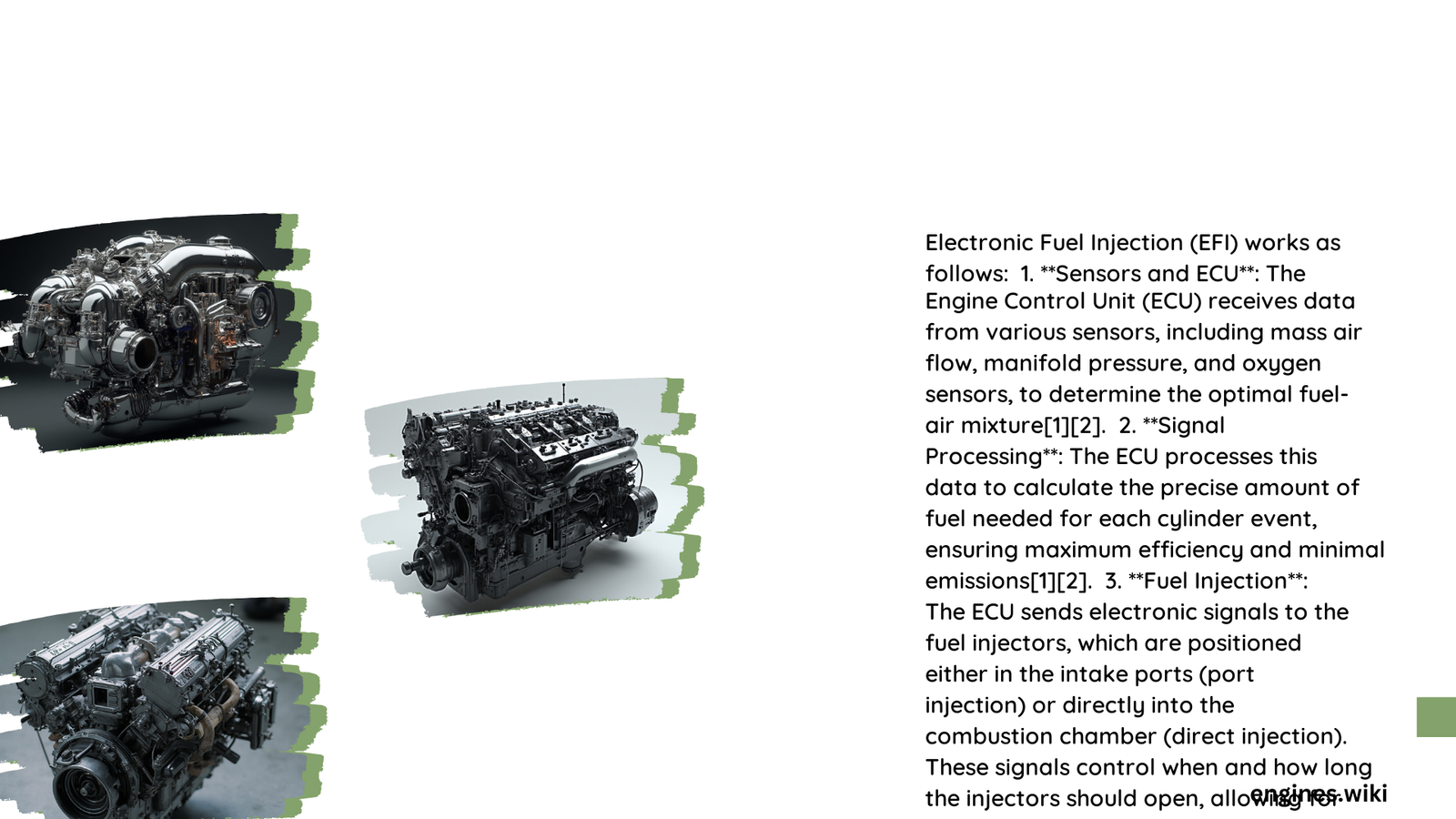Electronic Fuel Injection (EFI) represents a sophisticated automotive technology that revolutionized engine performance by precisely controlling fuel delivery through electronic systems. Unlike traditional carburetors, EFI systems utilize advanced sensors, electronic control units, and precision injectors to optimize fuel efficiency, power output, and emissions, transforming how modern engines operate and deliver performance across diverse driving conditions.
What Are the Core Components of an EFI System?
How Do Electronic Control Units Manage Fuel Delivery?
The Electronic Control Unit (ECU) serves as the brain of the EFI system, processing complex data from multiple sensors to make real-time fuel delivery decisions. Key functions include:
- Sensor Data Processing
-
Analyzing inputs from:
- Mass Airflow Sensor
- Oxygen Sensor
- Throttle Position Sensor
- Engine Temperature Sensor
-
Fuel Injection Calculations
- Determining precise fuel quantities
- Adjusting injection timing
- Maintaining optimal air-fuel ratios
What Mechanisms Control Fuel Atomization?
Fuel atomization in EFI systems occurs through sophisticated injector designs that break fuel into microscopic droplets. This process ensures:
| Atomization Factor | Performance Impact |
|---|---|
| Droplet Size | Improved combustion efficiency |
| Spray Pattern | Enhanced fuel distribution |
| Injection Pressure | Better fuel vaporization |
How Do Sensors Contribute to EFI Performance?
Sensors play a critical role in EFI systems by providing real-time engine performance data:
- Mass Airflow Sensor (MAF)
- Measures incoming air volume
- Calculates precise fuel requirements
-
Enables dynamic fuel adjustment
-
Oxygen Sensor
- Monitors exhaust gases
- Provides feedback on combustion efficiency
- Helps maintain ideal air-fuel mixture
What Are Different EFI Injection Types?
EFI systems incorporate multiple injection strategies:
- Port Fuel Injection
- Fuel injected near intake valves
- Provides uniform fuel distribution
-
Most common in modern vehicles
-
Direct Injection
- Fuel injected directly into combustion chamber
- Enables higher compression ratios
- Improved thermal efficiency
What Technical Challenges Exist in EFI Systems?
Technical challenges in EFI systems include:
- Maintaining precise fuel pressure
- Preventing injector clogging
- Managing electrical system complexity
- Ensuring consistent sensor performance
Advanced EFI System Considerations

How Do Modern ECUs Optimize Performance?
Modern ECUs utilize advanced algorithms and machine learning techniques to:
- Predict maintenance requirements
- Adapt to varying driving conditions
- Minimize emissions
- Maximize fuel efficiency
What Future Trends Exist in EFI Technology?
Emerging trends in EFI technology include:
- Integration with hybrid powertrains
- Enhanced artificial intelligence algorithms
- More sophisticated sensor networks
- Improved cybersecurity measures
Conclusion
Electronic Fuel Injection represents a pinnacle of automotive engineering, transforming engine performance through precise electronic control and advanced sensor technologies.
